Wondering how adsorption works for contaminant removal? If you want to learn more about the adsorptive properties of an activated carbon filter, we’ve shared everything you need to know in this guide.
📌 Key Takeaways:
- Adsorption is when molecules are transferred from a liquid to a solid surface.
- Activated carbon filters are the most popular and widely-used adsorptive filters today.
- Adsorptive filters offer an affordable, highly effective method of removing contaminants like chlorine and improving water’s taste, but they don’t remove all impurities from a water supply.
Table of Contents
- 📥 What Is Adsorption?
- 🆚 Adsorption Vs Absorption
- 🚰 How Does The Adsorption Process Work In Water Filters?
- 🔬 Which Water Contaminants Does Surface Adsorption Remove?
- 📊 Factors Affecting The Efficacy Of Adsorption
- ✨ What Are The Benefits Of Adsorptive Water Filters?
- ⚠️ What Are The Setbacks Of Adsorptive Water Filters?
- 🔚 Final Word
📥 What Is Adsorption?
Adsorption is the process of transferring a molecule from a liquid to a solid surface.
There are a few different adsorption processes – some use chemical bonds and some use physical forces.
The adsorption process can typically be reversed (desorption), which releases substances from a solid surface back into a liquid.
Adsorption takes place naturally in the environment. For instance, substances in ecosystems are transferred by adsorption, and exchanges between the atmosphere, hydrosphere, and geosphere are regulated by this process. Adsorption is needed for animal and plant growth, industrial processes, and much more.
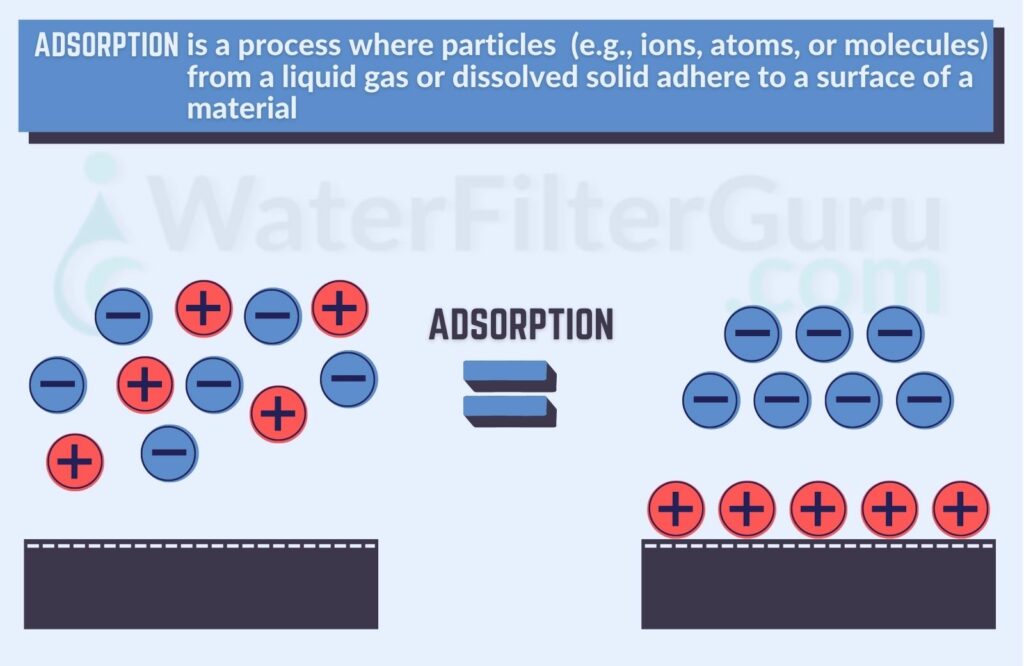
🆚 Adsorption Vs Absorption
Adsorption and absorption are not the same processes.
Absorption is when particles and liquids penetrate a substance. For example, when liquids soak into a sponge, this is absorption.
Adsorption, on the other hand, is when water molecules pass through a substance, while certain molecules in the water stick to the surface.
🚰 How Does The Adsorption Process Work In Water Filters?
Adsorption in a water filter is when small dissolved molecules or particles in water are attracted to, and attach to, the surface of the adsorbent filter media.
The molecules stick to the filter surface as a result of electrical attractive forces and energy differences, called van der Waals forces.
Activated carbon is the most widely-used adsorbent for water filtration, and effectively grabs hold of dissolved contaminants in a water supply.
There are several materials that may be used to make activated carbon media, including wood and charcoal. The material is charred and heated with carbon dioxide or steam, which removes all materials bar the carbon.
The end product is a nearly-pure carbon structure with a large surface area and lots of holes. This structure is crushed into powder or granule form, then used to make a filter media with particular pore sizes for specific contaminant removal purposes.
Adsorptive water filters are used in a variety of filtration applications, including domestic water filters (like water filter pitchers, whole home filters, under-sink systems, and faucet filters). They usually have a pore size of 1-20 microns.
When water is passed through a filter with adsorption technology, certain contaminants are removed, improving water’s taste, color, odor, and quality.
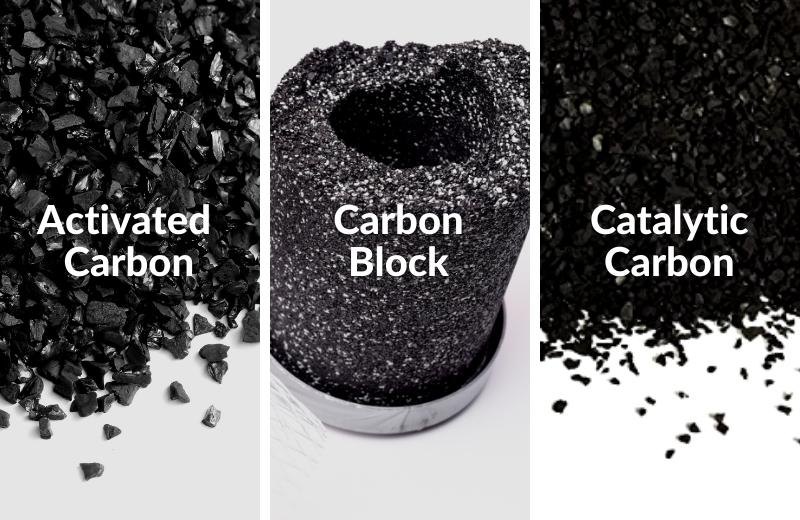
🔬 Which Water Contaminants Does Surface Adsorption Remove?
Some of the contaminants removed by adsorption are:
- Pesticides
- Chlorine
- Gasoline
- Microplastics
- Disinfection byproducts
- Industrial solvents
Some adsorptive water filters are also capable of reducing or removing heavy metals, like cadmium and lead.
📊 Factors Affecting The Efficacy Of Adsorption
There are a few factors that affect the efficacy of the adsorption filtration process, including:
Surface Area
The surface area of an adsorptive filter has the biggest effect on its contaminant removal capabilities.
Activated carbon filters have a very large surface area (around 1,000 square meters per single gram), which enables them to trap the greatest concentration of contaminants in water traveling through the filter pores.
Pore Size, Structure & Distribution
The pore size, distribution and structure are other factors that affect which contaminants are trapped in the filter media, and to what extent.
The smaller the pores and the less widely distributed, the greater range of contaminants can be trapped.
Larger filter pores will allow larger particles to pass through the media.
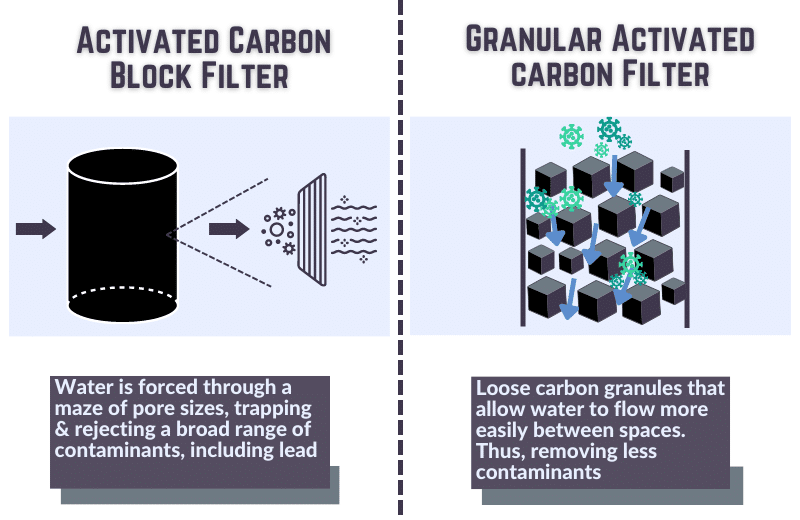
Water Flow Rate
The speed at which water flows through the filter pores also affect the efficiency of the adsorption.
The slower the water flow, and the longer the contact time with the adsorptive media, the more opportunities for adsorption, and the more thoroughly contaminants will be removed.
That’s why water filter pitchers, which use gravity filtration, often remove contaminants more effectively than adsorptive filters that are hooked up to your water line and powered by water pressure.
✨ What Are The Benefits Of Adsorptive Water Filters?
The key advantages of adsorptive water filters are:
Remove Harmful Contaminants
The main benefit of an activated carbon filter or any other filter offering molecular adsorption is that it removes harmful contaminants from water.
The surface atoms of the adsorbent attract chlorine, chemicals, solvents, and other adsorbate molecules, removing them from water and improving water’s quality.
Carbon water filter manufacturers can even apply to get their filters officially certified to NSF Standard 42, for chlorine removal, so you’ll know for certain that their filter is capable of reducing this contaminant.
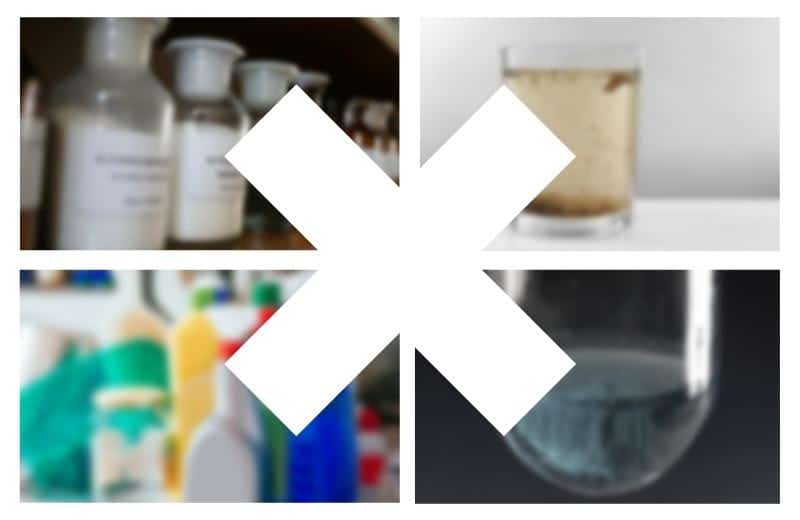
Improve Water Taste
By trapping certain chemicals in the adsorbent surface, an adsorptive water filter removes poor chemical tastes and odors, improving water’s taste.
If you hate the taste of chlorinated tap water, you can use an adsorptive water filter to effectively treat your water supply.
Affordable Filtration Solution
Adsorptive filters made from activated charcoal or a similar material are cheap to manufacturer and have a lower price point than other filter types.
👨🔧 If you want to filter your water but you have a small budget, an activated carbon filter should be suitable for you.
⚠️ What Are The Setbacks Of Adsorptive Water Filters?
Some of the setbacks of adsorptive water filters are:
Limited Contaminant Removal Abilities
Activated carbon filters and other adsorptive filters are great at removing certain contaminants – but alone, they can’t remove all impurities from water.
To remove contaminants like heavy metals, fluoride, and pathogens, you’ll usually need to combine adsorptive filter media with other media, like ceramic filter media and ion exchange media.
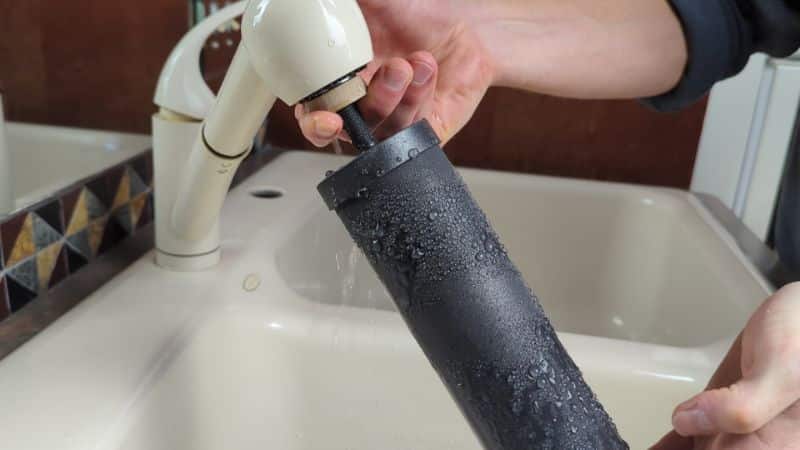
Relatively Short Filter Lifespan
Adsorptive water filters only work as long as there is free space on the filter surface for trapping contaminants.
Once the filter becomes clogged with contaminants, the surface space will become crowded, and there’ll be no further room for any more contaminants to be taken in. As a result, the flow of water through the filter will slow down as the pores become blocked.
Depending on the filter size and surface area, you’ll need to replace it every 2-6 months on average.
🔚 Final Word
Adsorption is one of the most effective water treatment methods for improving water’s taste and smell.
If you have a chlorinated drinking water supply, you can use an adsorptive filter, like a carbon filter, to remove the chlorine from your water and improve its taste.
To get the biggest benefits from a water filter, choose a filter that combines several filter media, including an adsorptive media, to remove the greatest range of contaminants.

